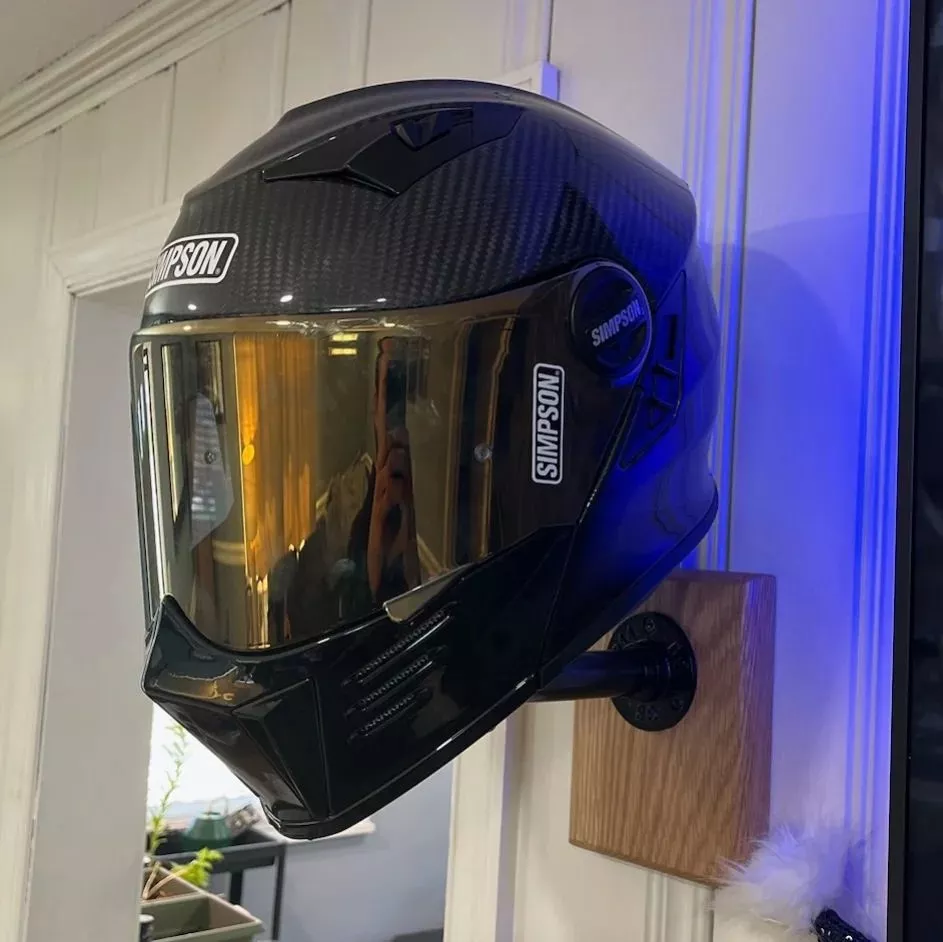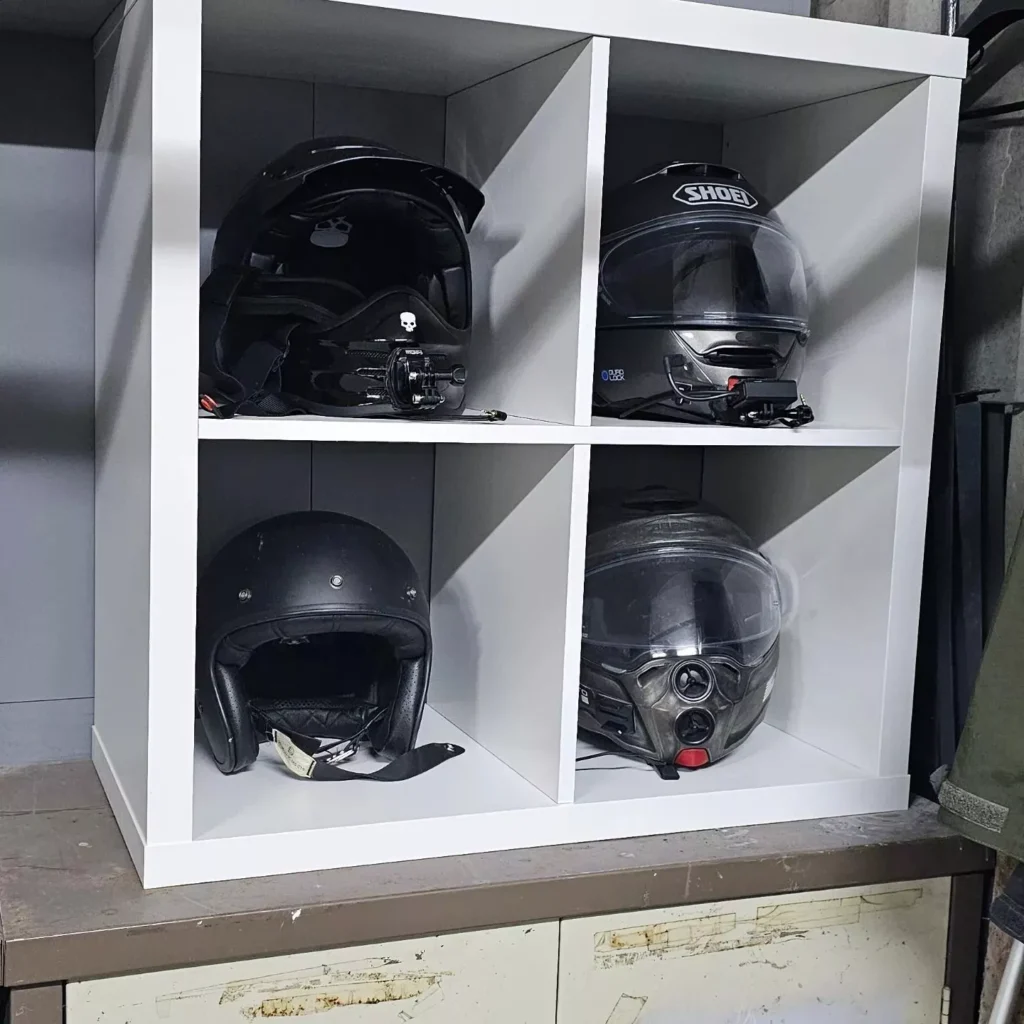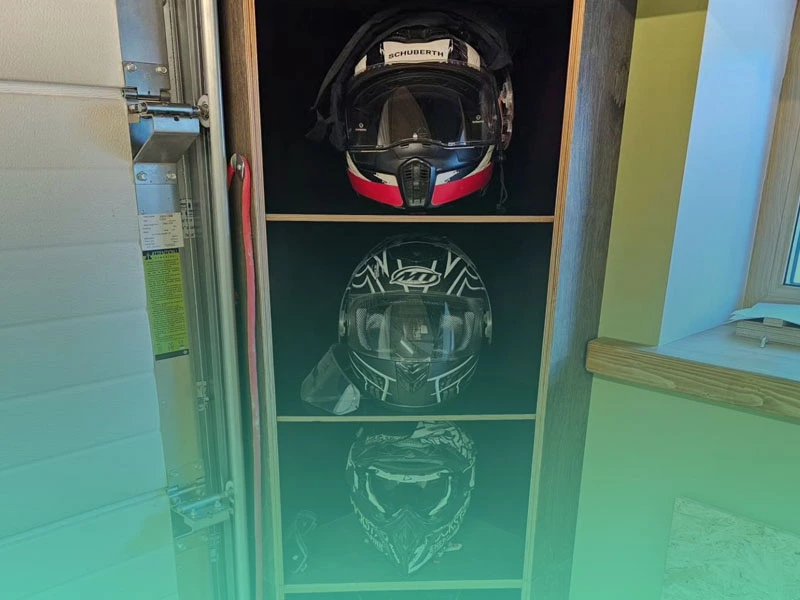Have you ever reached for your motorcycle helmet only to find it scratched, covered in dust, or worse, damaged? Isn’t it incredibly frustrating? I’ve been there and I know exactly how it feels. To end this unnecessary stress, I’ve put together a comprehensive guide on the best ways to store your helmet – so it’s ready to go when you are.
We’re going to delve into the various options, from handy helmet bags and sturdy wall mounts to more specialized storage units built just for helmets. The best part is that these aren’t just safe spaces for your helmet. They’ll also help prolong its life, meaning you can enjoy more thrilling rides with it.
But, here’s a friendly heads up – it’s not all smooth riding from here. There are some common traps to look out for when storing your motorcycle helmet. These mistakes could put your precious headgear in harm’s way, and I’m here to help you avoid them. So, hop on! Let’s ride through this journey of safely storing your helmet together.
Importance of Proper Motorcycle Helmet Storage

1. Why Your Helmet’s Storage Condition Matters
Proper motorcycle helmet storage is essential, and here’s why:
Longevity: The way you store your helmet impacts its lifespan. Exposure to harmful elements can weaken its structure, reducing its effectiveness over time.
Safety: Your helmet’s protective features, like the shock-absorbing lining, tough outer shell, chin strap, and visor, all depend on good storage practices to function correctly.
Hygiene: Incorrect storage can cause your helmet to become a hotspot for bacteria and mold, leading to unpleasant odors and potential skin issues.
Visibility: Improper storage can cause scratches or fogging on your visor, compromising your view while on the road.
Cost: High-quality helmets are an investment. Storing them properly can help avoid premature replacement, saving you money in the long run.
2. Impact of Improper Storage on Helmet Lifespan
Improper storage can significantly impact the lifespan of a helmet in several ways:
Physical Damage: Helmets stored inappropriately may be exposed to physical damage. For instance, if a helmet is dropped from a height, it can cause the protective foam inside to crack or break, reducing its effectiveness in protecting the head during an impact.
Exposure to Extreme Temperatures: Helmets stored in areas with extreme temperatures, such as a hot car or near a heat source, can degrade over time. High temperatures can lead helmet materials to weaken or deform, while very low temperatures can make them brittle.
Exposure to Sunlight: Prolonged exposure to sunlight can cause the helmet’s color to fade and the composition to deteriorate, especially if the helmet is made of plastic or other UV-sensitive substances. UV radiation can break down the helmet’s construction, reducing its strength and protective capabilities.
Chemical Exposure: If a helmet is stored in an area where it’s exposed to harmful chemicals, it can weaken the structure of the helmet. Even cleaning products that aren’t specifically designed for helmets can result in damage.
Moisture and Humidity: Storing a helmet in a damp or humid environment can lead to the growth of mold and mildew, which can harm the helmet’s materials and padding. Moreover, it can create an unpleasant smell and may pose health risks.
Secure Storage Solutions for Your Motorcycle Helmet
Here are some of the Secure Storage Solutions for Your Motorcycle Helmet:
1. Using a Motorcycle Helmet Bag for Safe Storage: A motorcycle helmet bag is a simple and portable solution for storing your helmet. These bags are designed to fit helmets of all sizes and often come with padding to protect the helmet from scratches and impacts. They also usually have handles or straps for easy carrying. Some even have additional pockets for storing other motorcycle accessories.
2. Storing Your Helmet on a Shelf or Helmet Bay: This is a more stationary solution. A shelf or helmet bay in your garage or home can be a great place to store your helmet. It keeps the helmet off the ground, reducing the risk of damage from accidental knocks or drops. It also allows for good air circulation around the helmet, which can help to keep it dry and prevent the growth of bacteria.
3. Considering a Storage Cabinet for Your Helmet: A storage cabinet can provide an extra level of protection for your helmet. Cabinets can protect your helmet from dust, direct sunlight, and potential impacts. Some cabinets are even designed specifically for helmet storage, with built-in shelves or compartments that fit helmets perfectly.
4. The Unique Approach: Mannequin Head for Helmet Storage: This is a more unconventional, but still effective, method of storing your helmet. A mannequin head can provide a stable and visually appealing way to store your helmet. It can help to maintain the shape of the helmet’s interior padding, and it also allows for good air circulation.
5. Specialized Helmet Hangers: A Stylish and Safe Option: Specialized helmet hangers are designed to securely hold your helmet, either on a wall or from a ceiling. They can be a stylish addition to your home or garage, and they also keep your helmet off the ground and away from potential hazards. Some hangers even have additional features, like locks for added security or hooks for hanging additional motorcycle gear.
What to Avoid When Storing Your Motorcycle Helmet

1. Common Mistakes in Helmet Storage
The following are some common mistakes people make when storing helmets:
1. Improper Surface: Helmets should not be stored on rough or uneven surfaces as they can cause scratches or damage to the outer shell. It’s best to store them on a flat, clean surface or a dedicated helmet stand.
2. Exposure to Sunlight: Prolonged exposure to sunlight can make the helmet’s color fade and can degrade the materials over time. It’s best to store helmets in a cool, dry place away from direct sunlight.
3. Exposure to Extreme Temperatures: Both high and low temperatures can affect the integrity of the helmet. High temperatures can lead the helmet to warp, while low temperatures can make it brittle.
4. Near Chemicals: Storing a helmet near chemicals or fumes can damage the composition of the helmet. Even the fumes from a freshly painted room can affect it.
5. Not Using a Helmet Bag: Many helmets come with a protective bag. Not using this bag can expose the helmet to dust, scratches, and other potential damage.
6. Hanging by the Chin Strap: Hanging a helmet by its chin strap can result in the strap stretching and losing its fit. It can also put pressure on the interior padding, causing it to wear out faster.
7. Not Cleaning Before Storage: If a helmet is not cleaned before being stored, sweat, oil, and dirt can degrade the helmet’s components over time. It’s important to clean the helmet according to the manufacturer’s instructions before storing it.
8. Long-Term Storage Without Inspection: If a helmet is stored for a long period, it should be inspected regularly for any signs of degradation or damage.
9. Ignoring Manufacturer’s Instructions: Different helmets may have different storage requirements. Always refer to the manufacturer’s instructions for the best practices on how to store your specific helmet.
The Risks of Storing Your Helmet in the Wrong Places
Storing your helmet in the wrong places can lead to several potential risks that can compromise its effectiveness and safety. Here are some of the risks:
Insect Infestation: If you store your helmet in a place that’s prone to insects, they can crawl into the helmet and create nests, which can be hard to remove completely. Some insects may also chew on the materials, causing further damage.
Dirt and Dust: Storing your helmet in a dirty or dusty environment can clog the ventilation holes and degrade the construction over time.
Moisture: Helmets should be stored in a dry place. Moisture can lead to the growth of mold and mildew, which can weaken the helmet’s structure and potentially cause health issues. If a helmet is stored in a damp place or not dried out properly after use, it can absorb moisture, which can weaken its structure and potentially lead to unpleasant odors.
Wear and Tear: Simply put, a helmet stored in a high-traffic area or where it’s constantly being moved or bumped can suffer from accelerated wear and tear. This can lead to a reduction in the helmet’s overall lifespan and effectiveness.
Conclusion
To wrap it up, proper storage of your motorcycle helmet is essential for its longevity and effectiveness. By following the tips and techniques outlined in this article, you can ensure that your helmet remains in optimal condition when not in use.
Remember to clean and inspect your helmet regularly, choose a suitable storage location, and utilize protective measures such as a helmet bag or case.
